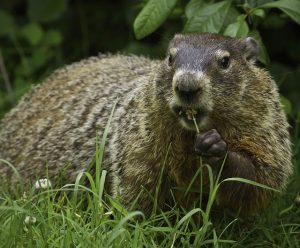The Real Story behind February 2nd, Groundhog Day

Source: The Punxsutawney Groundhog Club
Groundhog Day, February 2nd, is a popular tradition in the United States. It is also a legend that traverses centuries, its origins clouded in the mists of time with ethnic cultures and animals awakening on specific dates. Myths such as this tie our present to the distant past when nature did, indeed, influence our lives. It is the day that the Groundhog comes out of his hole after a long winter sleep to look for his shadow.
If he sees it, he regards it as an omen of six more weeks of bad weather and returns to his hole.
If the day is cloudy and, hence, shadowless, he takes it as a sign of spring and stays above ground.
The groundhog tradition stems from similar beliefs associated with Candlemas Day and the days of early Christians in Europe, and for centuries the custom was to have the clergy bless candles and distribute them to the people. Even then, it marked a milestone in the winter and the weather that day was important.
The Roman legions, during the conquest of the northern country, supposedly brought this tradition to the Teutons, or Germans, who picked it up and concluded that if the sun made an appearance on Candlemas Day, an animal, the hedgehog, would cast a shadow, thus predicting six more weeks of bad weather, which they interpolated as the length of the “Second Winter.”
Pennsylvania’s earliest settlers were Germans and they found groundhogs to in profusion in many parts of the state. They determined that the groundhog, resembling the European hedgehog, was a most intelligent and sensible animal and therefore decided that if the sun did appear on February 2nd, so wise an animal as the groundhog would see its shadow and hurry back into its underground home for another six weeks of winter.
New England farmers knew that we were not close to the end of winter, no matter how cloudy February 2nd was. Indeed, February 2nd is often the heart of winter. If the farmer didn’t have half his hay remaining, there may have been lean times for the cows before spring and fresh grass arrived.
The ancient Candlemas legend and similar belief continue to be recognized annually on February 2nd due to the efforts of the Punxsutawney Groundhog Club.

